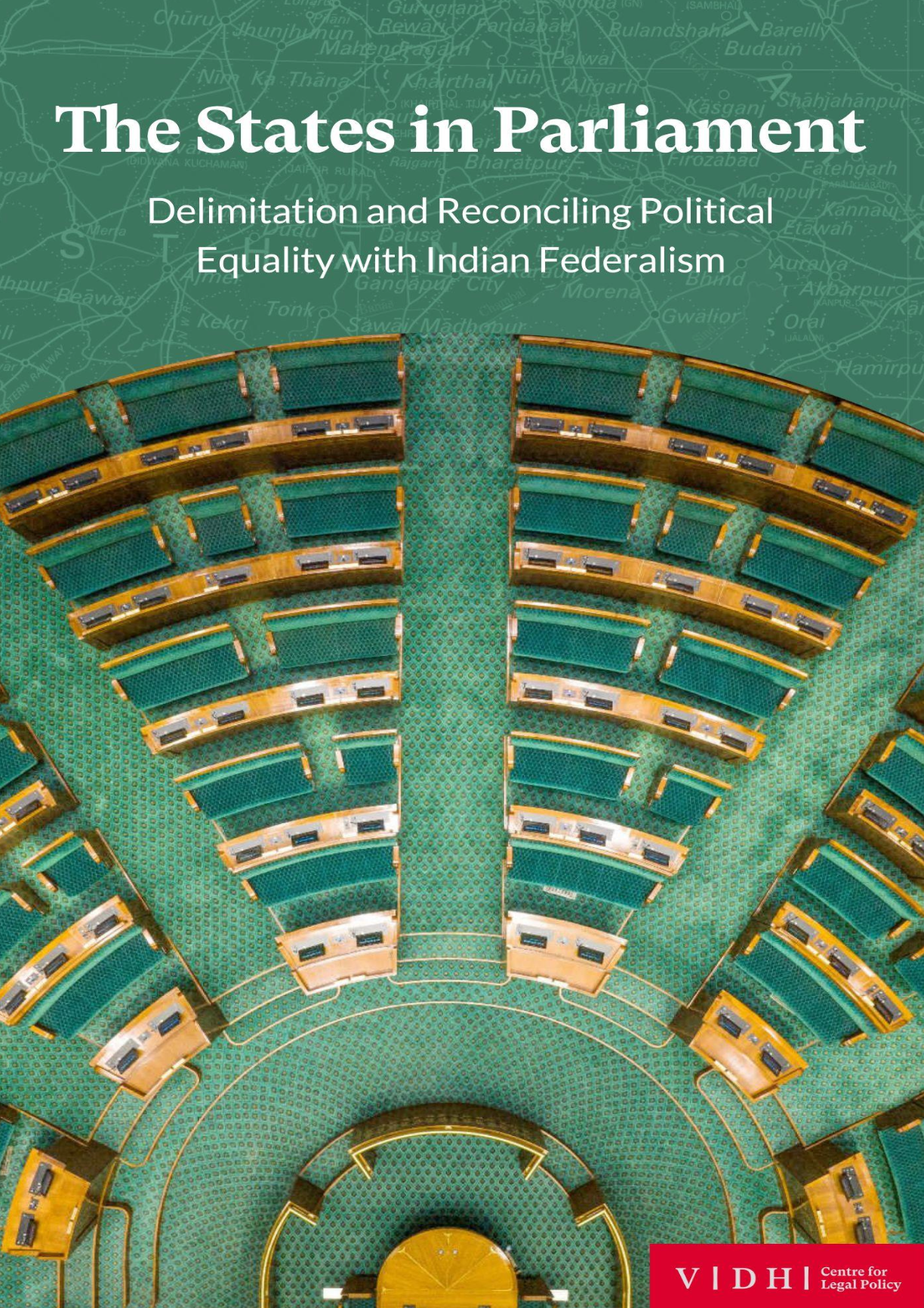
The States in Parliament
Delimitation and Reconciling Political Equality with Indian Federalism
At a Special Session of the Indian Parliament convened in September 2023, the Union Home Minister indicated that two key tasks would be undertaken after the 2024 General Elections – first, the population census, and second, delimitation of India’s electoral constituencies. The urgency of both these cannot be overstated, and it is the latter task – the delimitation of electoral constituencies – that Vidhi’s research is concerned with.
Delimitation is the process by which the boundaries of electoral constituencies are fixed, with the constituencies representing those territories whose populations vote for representatives to represent them in the legislature. The outcome of delimitation determines how many seats each state gets in the Parliament of India, making this exercise critical to the composition of the national legislature.
Constitutional Expectations and Political Realities
The Constitution of India requires that each state receive seats in the Lok Sabha in proportion with its population and that constituencies in a state should roughly have the same population. This is to ensure a basic principle of democracy: the value of one person’s vote should be the same as any other person’s, or the ‘one person, one vote, one value’ principle. Disregarding this principle would mean that some voters will have more of a say than others in deciding how legislatures are formed and laws are made. Essentially, the Constitution expects each legislator to represent roughly the same number of citizens.
The Constitution also expects boundaries of electoral constituencies to be revisited after every decennial census to account for changes in the country’s population. However, since the 1970s, there has been no reapportionment of seats in the Lok Sabha. This is because in 1976, the 42nd Amendment to the Constitution froze the delimitation of Lok Sabha constituencies as per the census of 1971, up to the 2001 census. This freeze was effected to allay concerns of those states (mostly in south India) which took a lead in population control, and faced the prospect of reduction of their number of seats in the Lok Sabha. In 2002 the day of reckoning was pushed further to 2026. Given this deadline is now fast-approaching, a fresh delimitation should, ideally, be in the offing.
India’s looming democratic crisis
While the allocation of Lok Sabha seats to different states has been frozen since 1976, population levels have changed drastically and unevenly, with north Indian states having registered faster growth. Demographic changes in states since then have not been accounted for in the composition of the Lok Sabha. Members of Parliament (MPs) in the faster-growing constituencies of north India represent substantially more people than their counterparts in south and east India. The outcome of this persistent deferral is severely unequal representation – overrepresentation in some states, while underrepresentation in others. Effectively, the value of a vote in north India is currently much lower than in south India.
What would happen if a reapportionment of seats in the Lok Sabha is carried out based on current population figures? Because this question has been left unattended for so long, population differences have widened considerably and its effects on seat allocation in the Lok Sabha will be quite drastic. Given the comparatively faster rate of population growth in north India, seat allocations based on current population levels would cause states such as Tamil Nadu, Andhra Pradesh, and Kerala to lose seats, while Uttar Pradesh, Bihar, Rajasthan, and Madhya Pradesh could gain seats. The eventual result would be an increase in the number of constituencies in the northern states, increasing their presence in Parliament disproportionately, and to the disadvantage of southern states.
The need of the hour
Any future delimitation and subsequent reapportionment of seats in Parliament will have to contend with harmoniously balancing two key constitutional values – federalism on the one hand, and the ‘one person, one vote, one value’ principle on the other. Vidhi’s research report titled “The States in Parliament: Delimitation and Reconciling Political Equality with Indian Federalism” discusses the question of how parliamentary seats should be distributed or “apportioned” between states, especially in light of the constitutional imperative of political equality. Across three broad sections, the report does the following:
- Decodes the principle of political equality – The controversy surrounding delimitation and the subsequent apportionment of seats to states routinely pits political equality against states’ representation in Parliament. The first section of this report attempts to reorient the approach to this problem by calling attention to the basic egalitarian principle that instigated the apportionment crisis and lies at its root. This section draws from global scholarship to explain why political equality should not be uncritically equated with numerical equality in voting power and population-proportionality, and how due consideration must be given to fair representation of groups in a democracy.
- Draws attention to the fragility of Indian federalism – This section locates the legal and historical context in which this crisis of representation has emerged, and emphasises on the relevance of federalism to the delimitation crisis. The section also traces the troubled history of Union-state tensions under the Constitution so as to highlight the gravity of the problem that population-proportionate apportionment would add to. This section also clarifies how the legal and political status of different states relative to each other is intimately linked with the centralising tendencies evident in the Union-state relationship.
- Proposes reform alternatives & approaches for the upcoming apportionment of seats – This section offers a menu of solutions to the crisis of representation, by detailing reform alternatives related to the design of Parliament. While this report does not set out a sure-shot solution to the problem at hand, it sets out a clear and systematic approach that can be pursued by political actors and citizens in answering what is the appropriate role of the states in Parliament. The seven solutions offered range from further postponing any reapportionment of seats in the Lok Sabha, to equalisation of state representation in the Rajya Sabha.
This report is a necessary initiative to have a conversation around this critical issue concerning representative democracy in India. The ultimate aim of Vidhi’s report, as well as the conversation that follows, should be to ensure that any future delimitation and subsequent reapportionment of seats in Parliament honours the words of the Constitution of India.




